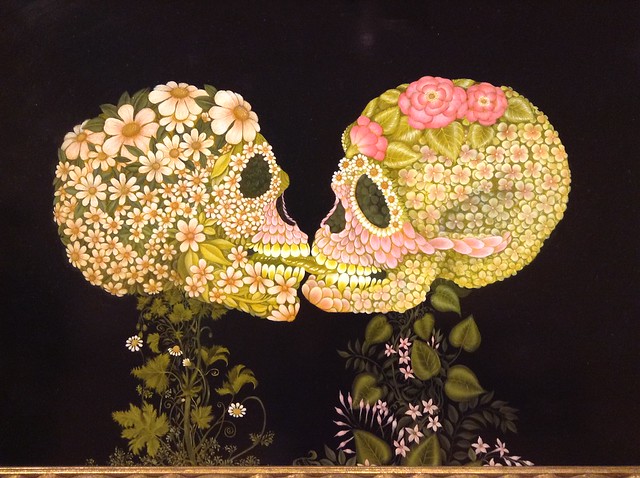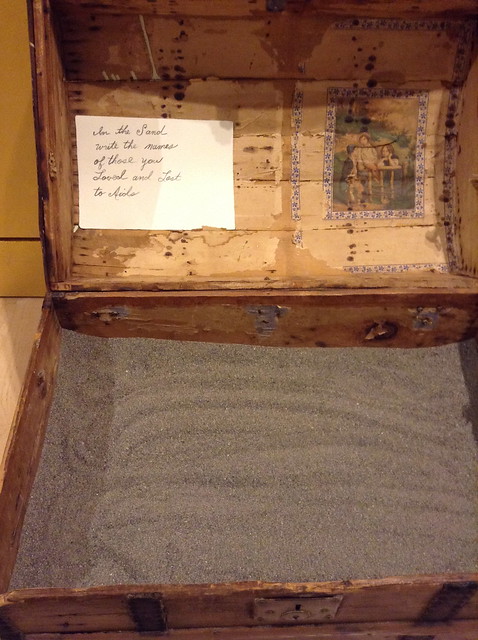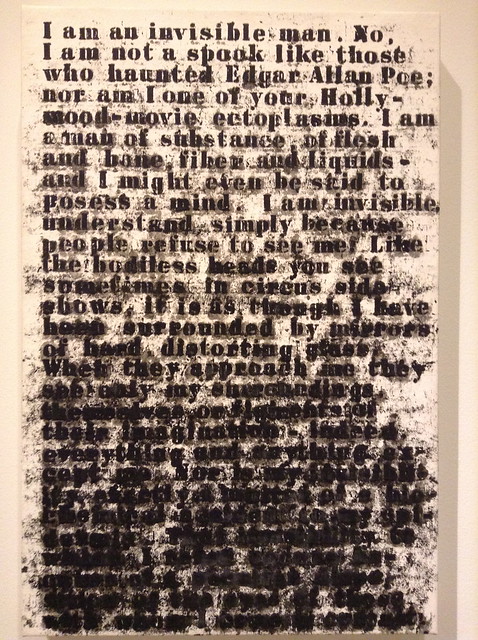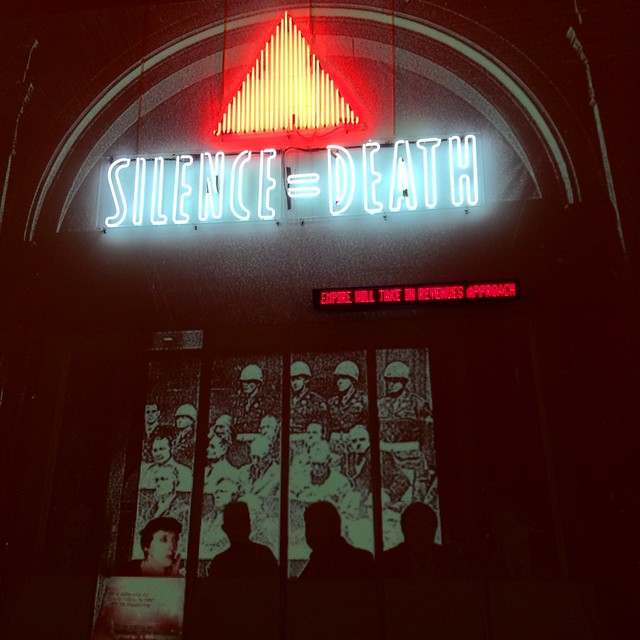In December I made the trek down to Tacoma with two friends to see the Art AIDS America exhibit. I expected it to be intense, but beyond that, I had no idea what it would be like. The week before I went down, a group protested in front of the museum to express their anger and sadness at the small number of artists in the show who were people of color, since 40% of people living with HIV/AIDS today are PoC.
The exhibit felt overwhelmingly white and focused on gay men. I have a few theories as to why, related to who had access to support, whose voices were and are being listened to, and how the early AIDS activism was fueled and driven by white gay men.
Altogether, there were over 100 pieces in the exhibit. Apparently I took pictures of about a quarter of them. There was a lot of staring death in the face, like Tino Rodriguez’s Eternal Lovers, which also took advantage of lack of gendered markers. Many of you know I love calaveras, and I loved the interpretation of this one.
The Tale of 1000 Condoms/Geisha and Skeleton flirted with the macabre, again, staring death defiantly in the face.
Many of the pieces I saw engaged with death and dying, bodies wasting away, the corporeal husks that so many people turned their eyes from, but the gaze was unflinching and loving.
Some pieces invited us to interact:
In the sand
write the names
of those you
loved and lost
to Aids
So I wrote “Jerry” the sweet doorman from the Timberline, and Mark, another doorman at the Timberline with his Tom Selleck mustache and gentle spirit, and Jim, my dad’s college roommate. After each name I swept my fingers through the sand and thought of Keats’ gravestone: Here lies one whose name was writ in water.
Glenn Ligon’s “I am not an invisible man” was particularly chilling after the protest:
I’m only going to talk about one more piece: Silence = Death:
I had this on a button when I was in college. I wore it pinned on my backpack. During the summer of ’92 I traveled around Europe. I remember being at a hostel, I think in Switzerland, and someone saw the button and said to me, “Sometimes silence equals life.” I kept silent, but I wish I hadn’t, because now I understand in a way I never could have then, that the price of silence is the death of the soul.
I really encourage you to look at the entire album. I included a lot of the plaques that give a lot more explanation. Or you can read this write up from The Stranger that gives a lot more context and information. It was what made me want to see the exhibit.






